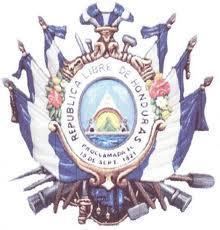Founded 1825 | Commander-in-Chief Juan Orlando Hernández | |
 | ||
Service branches Honduran Army
Honduran Air Force
Honduran Navy General René Arnoldo Osorio Canales Military age 18 for voluntary 2-3 year service Available for
military service 1,868,940 males, age 16-49,
1,825,770 (2008 est.) females, age 16-49 | ||
This article deals with the armed forces of Honduras.
Contents
Pre-1979
During the twentieth century, Honduran military leaders frequently became presidents, either through elections or by coups d'état. General Tiburcio Carías Andino was elected in 1932, he later on called a constituent assembly that allowed him to be reelected, and his rule became more authoritarian until an election in 1948.
During the following decades, the military of Honduras carried out several coups d'état, starting in October 1955. General Oswaldo López Arellano carried out the next coup in October 1963 and a second in December 1972, followed by coups in 1975 by Juan Alberto Melgar Castro and in 1978 by Policarpo Paz García.
1980s
Events during the 1980s in El Salvador and Nicaragua led Honduras — with US assistance — to expand its armed forces considerably, laying particular emphasis on its air force, which came to include a squadron of US-provided F-5s.
The military unit Battalion 316 carried out political assassinations and the torture of suspected political opponents of the government during this same period. Battalion members received training and support from the United States Central Intelligence Agency, in Honduras, at U.S. military bases and in Chile during the presidency of the dictator Augusto Pinochet. Amnesty International estimated that at least 184 people "disappeared" from 1980 to 1992 in Honduras, most likely due to actions of the Honduran military.
1990s
The resolution of the civil wars in El Salvador and Nicaragua, and across-the-board budget cuts made in all ministries, has brought reduced funding for the Honduran armed forces. The abolition of the draft has created staffing gaps in the now all-volunteer armed forces. The military is now far below its authorized strength, and further reductions are expected. In January 1999, the Constitution was amended to abolish the position of military commander-in-chief of the armed forces, thus codifying civilian authority over the military.
2000s
Since 2002, soldiers have been involved in crime prevention and law enforcement, patrolling the streets of the major cities alongside the national police.
2009
On 28 June 2009, in the context of a constitutional crisis, the military, acting on orders of the Supreme Court of Justice, arrested the president, Manuel Zelaya after which they forcibly removed elected President Zelaya from Honduras. See the article 2009 Honduran constitutional crisis regarding claims regarding legitimacy and illegitimacy of the event, and events preceding and following the removal of Zelaya from Honduras.
The military's chief lawyer, Colonel Herberth Bayardo Inestroza Membreño, made public statements regarding the removal of Zelaya. On June 30, he showed a detention order, apparently signed June 26 by a Supreme Court judge, which ordered the armed forces to detain the president. Colonel Inestroza later stated that deporting Zelaya did not comply with the court order: "In the moment that we took him out of the country, in the way that he was taken out, there is a crime. Because of the circumstances of the moment this crime occurred, there is going to be a justification and cause for acquittal that will protect us." He said the decision was taken by the military leadership "in order to avoid bloodshed".
Human rights violations during 2009
Following the 2009 ouster of the president, the Honduran military together with other government security forces were allegedly responsible for thousands of allegedly arbitrary detentions and for several forced disappearances and extrajudicial executions of opponents to the de facto government, including members of the Democratic Unification Party. However, evidence about these actions has yet to be provided and there has been some questioning in local media about the actual perpetrators, suggesting that they could actually be related to disputes within the leftists organizations themselves.
Air Force
The FAH operates from 4 air bases located at:
With the exception of Soto Cano Air Base, all other air bases operate as dual civil and military aviation facilities.
Additionally, 3 air stations located at:
Also a radar station operates at:
Navy
The navy is a small force dealing with coastal and riverine security.
The navy has 31 patrol boats and landing craft.
The Honduran navy has 4 naval bases:
Additionally, the Honduran navy has the following unit and schools:
Military-civilian relations and leadership
According to a statement in July 2009 by a legal counsel of the Honduras military, Colonel Herberth Bayardo Inestroza, part of the elite Honduran military generals were opposed to President Manuel Zelaya, whom the military had removed from Honduras via a military Coup d'état, because of his left-wing politics. Inestroza stated, "It would be difficult for us [the military], with our training, to have a relationship with a leftist government. That's impossible."
The current head of the armed forces is Carlos Antonio Cuéllar, graduate of the General Francisco Morazan Military Academy and the School of the Americas. In January 2011, the General Rene Arnoldo Osorio Canales former head of the Presidential Honor Guard, was appointed Commander.
As of 2012 the Honduran Military has the highest military expenditures of all Central America.
